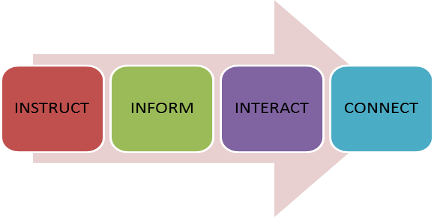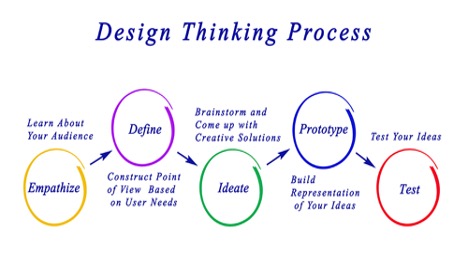20.6 Emails to Inform, Instruct, Interact and Connect
Learning Objective
- To be able to define your target audience and speak to them on a level that creates a desirable outcome for the intended purpose of constructing the email.
What Preconceived Assumptions Do You Make When Reading a Message?
Have you ever read an email without looking at the name of the sender and thought, “A man, or a woman, must have written this?” Are items contained within an email that we tend to assign gender to the manifestation of the use of these tools? The key is to write to your primary audience, and set aside pre-conceived notions as the author and the reader.
Consistent throughout management text, gender is portrayed as having influence on leadership styles and traits of leaders are often described differently between men and women. Texts regarding communication give way to these same differences. Research however, does not depict differences that attribute any level of significance to gender.
In a research study by Plumlee, Wright, A., and Wright, D., (2016, p.79), differences between how men and women communicate differently through written communication. Their study looks at four aspects to see if differences exist. The study by Plumlee, et al. evaluates “length of response, readability of the writing, me versus you orientation, and overall tone” (p. 79). The study evaluated 218 samples of writing and in three of the four categories resulted in no significant difference between men and women in those areas. The one category that resulted in a difference was in the area of overall tone. While men and women alike both tended to write more negative messages, women overall wrote more positively.
The key point to this study is awareness. As a communicator, keeping in mind potential variables within the context of writing can aid in the construction of generally positive messages. As a leader, you must decide who you are, what you stand for, and how you will act. Communication is a way in which your leadership style can be expressed, and the goal is to be tactful, and maintain awareness. One way to accomplish this awareness is by refraining from using words with negative connotations. The use of this strategy will allow the reader to read the content and gain understanding through general context.
The construct of an email message must include language and format design that informs, instructs, interacts and connects with the intended primary audience. The overall goal of business communication is to write to the primary audience, or the intended recipient of the communication. The primary audience is neither male nor female, rather is the intended target audience. The correspondence should be clear and concise and inform the audience of the purpose that the email is being constructed. When the intention of an email is to instruct the primary audience to perform an action or to make them aware, the language used should avoid ambiguity.
A process exists within communication: leadership involves communication and communication involves leadership. In order to perform well in written communication and portray positivity within routine messages, one must resolve that it is a dynamic process that requires development, practice, and reflection. Upon reflection, revision may be necessary. In order to communicate well, whether it is via email, reports, letters, text, or through another genre, an understanding of the paradigm and acknowledgement of its existence as a dynamic process is crucial.

Emails should be constructed in a fashion that serves to instruct the audience how to perform a task, informs them of ideas in which the writer of the communication intends to convey, interacts with the audience, and connects on a level that is easily understood. According to Plumlee, etal. (2016), differences did not exist in male and female correspondence other than what was evident as depicted through tone. Therefore goals of male and female authors as hypothesized were disproven through study. In this chapter, we have extrapolated the gender ideas of purpose of communication into one concept. Rather than stating that males inform and instruct in their communications, and that females tend to interact and connect in their communications, we have synthesized the ideas into one general platform for business communication through email to purport that all written emails should contain all four actions.
Research completed by Jansen and Janssen (2010) evaluates the use of and number of politeness strategies within refusal letters. While this chapter does not focus on letters, rather addresses emails, the tools that can be utilized are similar. Their study looks at the effect that the use of strategies have on the evaluation that the conclusions that the reader determines. Utilizing positive strategies has a greater positive effect upon the reader than using other strategies. Style, grammar, spelling, tone, politeness and other pragmatic functions can influence a reader’s evaluation.
For the purpose of explaining actions to be used when constructing emails in this chapter, we subscribe that the application of the “T.W.O.-P.A.R.T.” strategy can create a more positive experience between writer and reader, and create a less hostile transaction. After all, creating business communication undoubtedly requires creativity and practice.
How to Achieve Your Goal Using Design Thinking Principles

The creation of effective business communication that seeks to invoke action by the reader, as discussed is influenced by tone, positive strategies, and politeness. Regardless of the expected outcome, one can properly design effective communication by implementing design thinking principles. This principle can be applied, and are not limited to areas of engineering, fashion, graphic design, or other creative business realms. The concept is applicable to communication during the construction of routine and positive messages. Design thinking principles include empathizing, defining, ideating, prototyping, and testing. While design thinking is typically utilized in the development of products and services, we encourage the employ of the same process when constructing routine, positive communications in emails. The reason for this is that the sender of the email is instructing, informing, interacting, and connecting, in order to invoke action from the reader. When utilizing design thinking in other areas such as to invoke social change, the concept is the same as utilizing in emails: seek to invoke action.
The Stages of Design Thinking Involve:
- Empathy
According to the Institute of design at Stanford, the empathetic stage is the initial stage of the design thinking process which requires knowing and understanding your audience. This may include understanding the existing culture to gain insights, to determine what language and form used will be acceptable.
- Define
The next stage is the define mode, in which one moves to drawing conclusions from their observations and engagement to understand context, in order to address the problem or issue. After all, you have a reason for constructing the email, right?
- Ideate
The next stage in the process is ideating, where the goal is to generate solutions and requires brainstorming. This stage is where utilization of leadership skills developed over the years can manifest. Leaders must plan and revise; plan and revise.
- Prototyping
The next stage, prototyping, involves making your ideas come to fruition, and getting rid of the ones that do not work. Prototyping in business communication can involve the creation of multiple emails that you do not send, in order to decide which one will ideally serve your purpose and audience.
- Testing
In the testing stage, perhaps showing the email construction to supervisors or co-workers to gain feedback would aid you in deciding the best format to use and send. This will benefit you by gaining experience in understanding your audience, providing content that is understood, creating a positive experience for you and the reader, and ultimately invoking the action you seek to obtain.
Key Takeaway
- Create emails that instruct, inform, interact and connect to the reader and utilize design thinking principles. Seek to invoke action within readers.
Exercises
- Construct an email that seeks to inform your staff of a policy change. Keep in mind the organizational culture. What language will you use? Check the message for tone.
- Now create a second email that seeks to inform your staff of a policy change and walk through the design thinking stages of empathizing, defining, ideating, prototyping and testing. The prototyping phase will require you to brainstorm with others. The testing phase will require you to test the email out on some friends for feedback on how they received your message. Was it positive? Did it instruct, inform, interact and connect effectively? Were they clear on the intended message and action needed?
- Create a scenario and construct an email that emphasizes a problem within your company. As the boss you need to inform employees of the problem. What should be included in the email, how will you connect with others, and what should the email contain in the first paragraph?
References
Hasso Plattner, Institute of Design at Stanford. (2012). An introduction to design thinking process guide. Retrieved from: http://waag.org/sites/waag/files/public/media/publicaties/design_thinking_process_guide-by-nc.pdf
Jansen, F., & Janssen, D. (2010). Effects of positive politeness strategies in business letters. Journal of Pragmatics, 42(9), 2531-2548. doi:10.1016/j.pragma.2010.02.013
Plumlee, G. L., Wright, A., & Wright, D. N. (2016). He wrote, she wrote: Gender similarities and differences in written business communication. The Journal of Business Diversity, 16(1), 78. Retrieved from: http://gvsu.summon.serialssolutions.com/search?s.q=positive+messages&spellcheck=true#!/search?ho=t&fvf=IsScholarly,true,f&l=en&q=positive%20written%20communication
